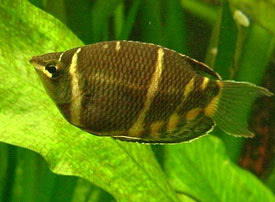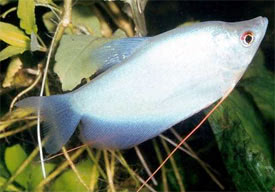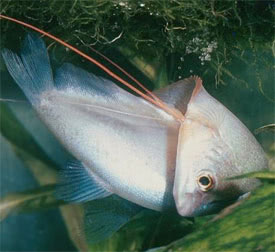Sphaerichthys Osphromenoides
Trichopodus
An obligate inhabitant of peat swamps and associated blackwater streams. These ancient biotopes are usually found in areas of rainforest, the dense canopy of branches above meaning very little light penetrates the water surface and riparian vegetation also tending to grow thickly.The water is typically stained darkly with humic acids and other chemicals released by decaying organic material. The dissolved mineral content is generally negligible and the pH can be as low as 3.0 or 4.0. The substrate is usually covered by fallen leaves, branches and submerged tree roots and at certain times of year the fish may be forced to survive within the moist leaf litter for several weeks as permanent water is not always available.
The type locality contained tea-coloured water with a pH of 3.5-3.7 in 1991. The substrate was composed of leaf litter and detritus and the fish most common in slow-moving, well-shaded, shallow (< 1 m deep) habitats, or along vegetated margins of deeper streams, although it’s also been collected from the banks of faster-flowing streams. Many of the habitats were noted to be temporal in occurrence, with sympatric species including Anabas testudineus, Betta bellica, Parosphromenus harveyi, Sphaerichthys osphromenoides, Trichopodus leerii, T. pectoralis, Trichopsis vittata, Helostoma temminkii, and Luciocephalus pulcher.








No comments:
Post a Comment